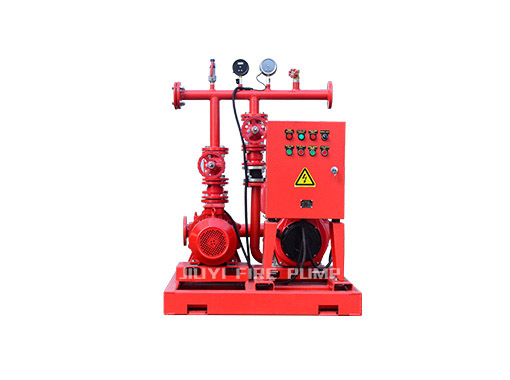
Fire pumps are essential components of fire protection systems, providing the critical water pressure and flow needed to combat fires effectively. Unfortunately, when these systems fail, the consequences can be catastrophic. Understanding the common causes of fire pump failures and implementing effective prevention strategies is vital for ensuring the reliability and safety of fire protection systems. In this article, we will explore the primary causes of fire pump failures and discuss best practices for prevention.
Common Causes of Fire Pump Failures
-
Inadequate Maintenance
- Neglected Routine Checks: Regular testing and maintenance are crucial. Failure to conduct routine inspections can lead to undetected issues that may escalate into significant problems.
- Poor Documentation: Without accurate records of maintenance activities, critical checks may be overlooked, leading to potential failures.
-
Mechanical Wear and Tear
- Component Deterioration: Over time, essential components such as bearings, seals, and impellers can wear out. If not replaced, these worn parts can lead to pump failure.
- Corrosion: Pumps exposed to moisture or harsh conditions can develop rust and corrosion, compromising their structural integrity and performance.
-
Electrical Failures
- Wiring Issues: Loose connections, damaged wiring, or faulty electrical components can prevent the pump from starting or functioning correctly.
- Battery Malfunctions: For electric pumps with backup batteries, failure to maintain battery health can lead to a lack of power during emergencies.
-
Improper Sizing and Installation
- Incorrect Sizing: A fire pump must be appropriately sized for the facility it serves. An undersized pump may not provide adequate pressure, while an oversized pump can lead to inefficiency and excessive wear.
- Installation Errors: Incorrect installation can result in alignment issues, leading to mechanical stress and eventual failure.
-
Water Supply Issues
- Insufficient Water Source: A pump cannot operate effectively if the water supply is inadequate or obstructed. This can happen due to changes in the water table, valve malfunctions, or obstructions in the supply line.
- Contaminated Water: Debris and contaminants in the water supply can clog filters and damage pump components, leading to failures.
-
Human Error
- Operational Mistakes: Improper operation by untrained personnel can lead to pump failures. This includes failing to follow start-up and shut-down procedures correctly.
- Neglected Training: Lack of training for staff on fire pump operation and maintenance can result in critical errors.
Prevention Strategies
-
Implement a Regular Maintenance Schedule
- Establish a routine maintenance program that includes regular inspections, testing, and servicing. Adhere to manufacturer recommendations and local regulations.
- Schedule annual flow tests and pressure tests to ensure the pump is operating within specifications.
-
Conduct Thorough Inspections
- Perform monthly visual inspections of the fire pump and associated components. Look for signs of wear, leaks, and corrosion.
- Ensure that electrical connections are secure and that backup power systems are functional.
-
Invest in Proper Training
- Train personnel on the operation and maintenance of fire pumps. Ensure they understand the importance of regular checks and how to identify potential issues.
- Provide ongoing training to keep staff updated on best practices and regulatory changes.
-
Ensure Proper Sizing and Installation
- Consult with fire protection professionals to ensure pumps are correctly sized and installed according to the specific requirements of the facility.
- Perform hydraulic calculations to confirm that the pump can meet the necessary flow and pressure demands.
-
Monitor Water Quality and Supply
- Regularly check the water source for sediment and contaminants that could impact pump performance. Consider installing filtration systems if necessary.
- Maintain clear access to water supply lines to prevent obstructions.
-
Adopt Predictive Maintenance Techniques
- Utilize technology to monitor pump performance and predict potential failures. Implementing IoT solutions can provide real-time data on operational efficiency.
- Analyze performance data to identify trends that may indicate the need for preventative maintenance.
Conclusion
Understanding the common causes of fire pump failures and implementing effective prevention strategies is essential for maintaining the reliability of fire protection systems. By prioritizing regular maintenance, conducting thorough inspections, and ensuring proper training and installation, organizations can significantly reduce the risk of pump failures.
A proactive approach to fire pump management not only enhances safety but also ensures compliance with regulations and protects valuable assets. Remember, the effectiveness of your fire protection system is only as strong as its weakest link. Invest in the health of your fire pump systems to safeguard lives and property against the devastating effects of fire.
